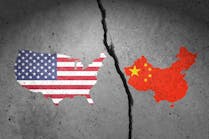One of my first jobs in healthcare was supporting the merger of two Catholic healthcare systems, and more specifically, an initiative to better align the medical staff and the administration. A physician had been appointed to lead the newly merged organization, replacing a business-savvy Catholic nun who had long held the position. The physician CEO worked to dispel a rather simplistic, but commonly held, view that hospital administrators only care about money, while physicians just want to do and use whatever they prefer in caring for patients regardless of cost. By facilitating communications among the various parties involved in healthcare delivery, he sought to create mutual respect and appreciation for what each brings to the table in support of better patient care.
Over the years, the number of physicians serving as health system and hospital CEOs has continued to increase; so, too, has the presence of physician leaders in supply chain. Their involvement is central to what is known as the clinically integrated supply chain, where clinicians and supply chain professionals work collaboratively, often as part of larger, multi-disciplinary teams to deliver the highest value to patients.
When Dr. Tom Faciszewski, a spine surgeon, spoke at the 2013 GHX Summit about his new supply chain leadership role at the Marshfield Clinic, he was a rarity. Regine Villain, then-head of supply chain at the Medical University of South Carolina, was so impressed, she convinced her leadership to create a similar position on her team. While such appointments have continued to grow moderately since then, the pandemic really catalyzed interest in hiring supply chain medical directors.
According to research,1 both health system executives and supply chain leaders found having a physician involved in supply chain to be highly valuable during the pandemic. They played key roles in not only crafting new clinical guidelines around the use of scare supplies, but also helping communicate the importance of those changes to clinical staff.
As chair of AHRMM, I had the opportunity to appoint Jimmy Chung, MD, to lead our first clinically integration task force in 2017. Dr. Chung, who today serves as chief medical officer for Advantus Health Partners, has been a long-time advocate for physician leadership in supply chain, as well as a vocal critic of a medical education system that has not historically trained physicians to be team players. Too often, he says, when physicians have been called upon to support supply chain initiatives, they have asked, “What’s in it for me?” as opposed to how they could support the overall system’s ability to deliver better value to patients.
On the other hand, many health system administrators have expressed fear that physicians will take their patients (and business volume) elsewhere if not allowed to use the products they prefer. While that occasionally happens, research2 conducted by ProcuredHealth (now Lumere) found that physicians care more about efficient hospital operations (88%) than having unlimited access to devices (67%). Clinical autonomy is still high on the list for physicians, but Chung says that has more to do with allowing physicians to use their scientific training to decide the best care pathways for their patients. As we develop more evidence-based practice guidelines, there are increasing opportunities for clinical-supply chain collaboration, which can include, but should not be limited to, product selection.
An ideal place to start, says Chung, is reducing variation. According to the Lumere research, most physicians believe that having better access to data on both clinical variation and the cost of care can help them improve the quality of care they deliver. With better data, physicians and supply chain leaders can work together to determine what care pathways, including which products, help deliver the best quality care at an affordable cost.
Together, supply chain leaders and their medical directors can help generate and present data to the medical staff on variation in care protocols, including the medical products used, and the corresponding impacts on cost and quality. In his experience, Chung says just having access to data has led some physicians to collectively change practice to improve quality, while also standardizing on products to support better aggregate pricing.
But the real opportunities extend far beyond product and price. In 2021, I interviewed more than 50 clinical, supply chain, and administrative leaders about the value of a clinically integrated supply chain. I discovered the real opportunity to improve both clinical and financial outcomes and patient value occurs when the various disciplines in healthcare come together to determine what best supports the health of individuals and entire populations. To make the best decisions, all parties need access to good, quality data presented in a manner that illustrates the interrelationships between cost, quality, and outcomes.
Just as important is mutual respect among the players for their respective areas of expertise. Given their training, physicians should decide how to treat the patients in their care, but they should also understand the impact of those decisions on the system as a whole and its ability to deliver both high quality and affordable care. That understanding only comes from involving other “experts” with responsibility for managing the multitude of resources and processes across the system.
Supply chain can play an important role in convening multidisciplinary collaborations, given it interacts with subject matter experts both inside and outside of the healthcare delivery environment. Working with physician leaders, supply chain has the opportunity to broaden its focus beyond products and help align the parties on more strategic, system level objectives. For example, when the question is binary in nature, such as whether or not to approve a new product request, it can set up a win-lose situation. On the other hand, when the question is more strategic, such as how to reduce hospital-acquired infections or improve health equity, the various parties can show up more aligned on finding solutions. The answer may still involve what products or services to use, but it will no longer be a matter of who wins. Instead, the winners will be the patients and the ability of the health system to serve them.References
1. Brethauer, et al. “Physician Leadership in Supply Chain: Now More Important Than Ever” https://www.jhconline.com/physician-leadership-in-supply-chain.html, June 2021
2. Falk S, Cherf J, Schulz J, Huo A. Cost and Outcomes in Value-based Care. Physician Leadership Journal Website. https://www.physicianleaders.org/news/research-costs-outcomes-value-based-care. January 23, 2019

Karen Conway | CEO, Value Works
Karen Conway, CEO, ValueWorks
Karen Conway applies her knowledge of supply chain operations and systems thinking to align data and processes to improve health outcomes and the performance of organizations upon which an effective healthcare system depends. After retiring in 2024 from GHX, where she served as Vice President of Healthcare Value, Conway established ValueWorks to advance the role of supply chain to achieve a value-based healthcare system that optimizes the cost and quality of care, while improving both equity and sustainability in care delivery. Conway is former national chair of AHRMM, the supply chain association for the American Hospital Association, and an honorary member of the Health Care Supplies Association in the UK.





